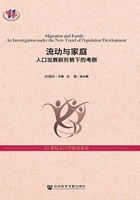
四 启示
第二次人口转变的提出,让我们看到了新的人口变化,看到了人口所承载的新的社会变化,更看到了人口与社会变迁之间空前紧密的互动关系和前所未有的作用机理。它给我们的启示就是:在这样一个“以人为中心”的时代,这样一个强调“可持续发展”的时代,我们关注新的人口行为和人口现象,实质是要了解和认识其背后所折射的社会变化,以及由变化带来的新的社会需求。满足这些需求,促进人的全面发展和人口长期均衡发展,是社会文明进步的客观要求,也是政府和社会的责任,反映了人口转变从“自然”到“自为”的发展规律。在这方面,中国为世界提供了不一样的范例和经验。就我国而言,如果说过去30多年为了更好地实现经济腾飞和协调发展,我们通过计划生育让人口“适应”了经济社会;那么今后30年、50年甚至更长时间,“以人为本”要求人口应逐步复归其“主体”地位,这意味着我们的经济社会发展要适应人口的变化,满足人口新的社会需求,不断提高人们的生活与生命质量,因为这才是我们发展的目的本身。
参考文献
李建民,2000,《后人口转变论》,《人口研究》第4期。
蒋耒文,2002,《“欧洲第二次人口转变”理论及其思考》,《人口研究》第3期。
王艳,2008,《经典人口转变理论的再探索——现代人口转变理论研究评介》,《西北人口》第4期。
李建民,2009,《中国的生育革命》,《人口研究》第1期。
A. Podrazka, 1989,“Types of the Demographic Transition in the Countries of Europe, ”(in Polish), Studia Demograficzne 98, 49-73.
David Coleman, 2004,“Why We don's have to Believe without Doubting in the‘Second Demographic Transition' -Some Agnostic Comments, ”Vienna Yearbook of Population Research 2: 11-24.
David Coleman, 2006,“Immigration and Ethnic Change in Low-Fertility Countries: A Third Demographic Transition, ”Population and Development Review 32: 401-446.
D. J. Van de Kaa, 1987,“Europe's Second Demographic Transition, ”Population Bulletin 42:11-59.
D. J. Van de Kaa, 1994,“The Second Demographic Transition Revisited: Theories and Expectations, ”in G. Beets, H. van den Brekel, R. Cliquet, G. Dooghe, and J. de Jong Gierveld, eds. , Population and Family in the Low Countries 1993: Late Fertility and Other Current Issue(Lisse: Swets & Zeitingler), pp.81-126.
David S. Reher, 2004,“The Demographic Transition Revisited as a Global Process, ”Population, Space and Place 10: 19-41.
John C. Caldwell, 2008,“Three Fertility Compromises and Two Transitions, ”Population Research Policy Review 27: 427-446.
M. Myrskyla, H-P Kohler and F. Billari, 2009,“Advances in Development Reverse Fertility Declines, ”Nature 460: 741-743.
Makoto Atoh, Vasantha Kandiah and Serguey Ivanov, 2004,“The Second Demographic Transition in Asia, ”The Japanese Journal of Population 1: 42-75.
Philip E. Ogden and Ray Hall, 2004,“The Second Demographic Transition, New Household Forms and the Urban Population of France during the 1990s, ”Transactions of the Institute of British Geographers 29: 88-105.
R. Kelly Raley, 2001,“Increasing Fertility in Cohabiting Unions: Evidence for the Second Demographic Transition in the United States? ”Demography 38: 59-66.
R. Lesthaeghe, 2010,“The Unfolding Story of the Second Demographic Transition, ”Population and Development Review 36: 211-251.
R. Lesthaeghe and D. J. Van de Kaa, 1986,“Two Demographic Transitions? ”in D. J. Van de Kaa and R. Lesthaeghe, eds. , Bevolking: Groei en Krimp(Population: Growth and Decline)( Deventer, Van Loghum Slaterus), pp.9-24.
R. Lesthaeghe and K. Neels Source, 2002,“From the First to the Second Demographic Transition:An Interpretation of the Spatial Continuity of Demographic Innovation in France, Belgium and Switzerland, ”European Journal of Population 18: 325-360.
R. Lesthaeghe and Lisa Neidert, 2006,“The Second Demographic Transition in the United States:Exception or Textbook Example? ”Population and Development Review 32: 669-698.
Sergei Zakharov, 2008,“Russian Federation: From the First to Second Demographic Transition, ”Demographic Research 19: 907-972.
Tomá Sobotka, 2008,“The Diverse Faces of the Second Demographic Transition in Europe, ”Demographic Research 19: 171-224.
Zenaida R. Ravaneral, Hwa Young Lee, Fernando Rajulton and Byung-Yup Cho, 1999,“Should a Second Demographic Transition Follow the First? Demographic Contrasts: Canada and South Korea, ”Social Indicators Research 47: 99-118.